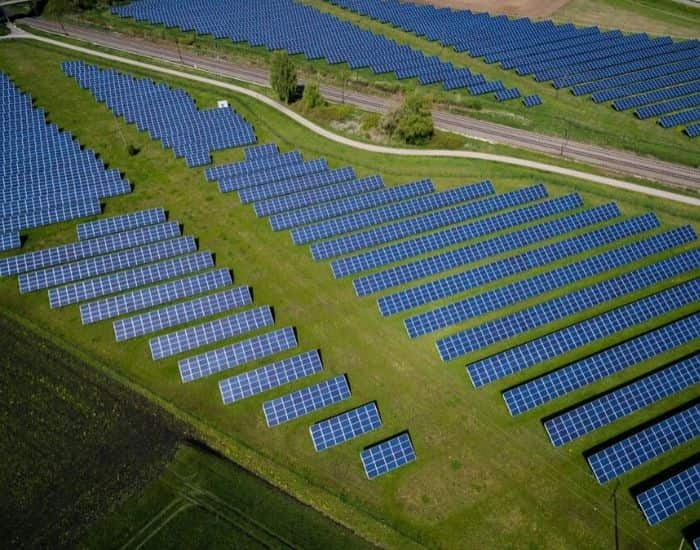We live in an era where technology is intertwining with all aspects of our lives. We have small computers in our pockets, appliances that can be programmed to do their job without our assistance or supervision, and robotic arms to help ease our jobs.
But there is another field that is just as important, and where technology, if used right, can do better: environmental protection.
Technology has helped us connect with each other, protected us from deadly diseases and simplified our life altogether, so why not help us clean it?
Environmental scientists are working every day to find new ways to use technology to the planet’s favour, and help fight off what seems to be out next biggest milestone, global warming.
One of the first moments when people truly realized that technology can help reduce pollution in the air that we breathe was when electric cars started to become popular.
In the beginning, scepticism was high, and the infrastructure was nowhere near perfect for electric cars to prove effective, but everything has changed now. In 2021, electrical vehicles were accounted for 8% of the global vehicle market, and the numbers are only growing.
But the automotive industry is just a small area that technology is slowly changing for the better. In what follows, we will be discussing five ways technology is shaping environmental protection and what it could mean for future generations.

1. Renewable energy
Perhaps one of the most popular answers people give, when asked how technology is helping save the environment, renewable energy is on everyone’s minds nowadays. Clean energy is becoming cheaper and cheaper, making it a much better alternative than fossil fuels.
Up until a few years ago, there were not many options for people who wanted to switch to clean energy, but nowadays, products such as the solar panels from Tesla, which look no different than roofing tiles, are much more accessible and appealing.
But those solar panels are just the beginning, and new material is in the making – solar glass. Solar glass has enormous potential, as it can be used both for the windows and for capturing and converting solar energy.
Think of a skyscraper made entirely out of solar glass. It could have the potential to not only power the entire building, but also store energy and pump it back into the city’s electrical grid.
2. Cleaning up the ocean
Probably one of the best technological solutions for fighting ocean pollution is System 001. It was launched in September 2018 and is set to clean up the Great Pacific Garbage Patch, which is estimated to be three times bigger than France.
The system includes a floater, which is 600 meters long, that floats on the surface of the ocean, to which a three-meter-deep skirt is attached. The skirt is meant to prevent debris escape and sink, making it easier to be captured.
The U-shaped system will help plastic gather in the middle area, making it easier to be collected and extracted. Then, every few months, the garbage is collected by a garbage truck-like vessel, which detaches itself from the system and heads back to the shore.
It is estimated that, with 60 such system, half of the Great Pacific Garbage Patch can be removed in the next 5 years.
3. Reducing waste
Going digital with all the bills, newsletters and advertising materials, which would otherwise need to be printed, is helping companies promote a greener business culture and clearly establish which side they are on, in this environmental war. What’s more, it also helps companies save money they would otherwise spend on paper and print.
Storing most of the data in the cloud, instead of printing everything out and archiving them in rooms full of cabinets, is also helping save space, cut costs and reduce waste.
For big companies, waste balers are also another great option to reduce space when it comes to storing waste and make recycling much easier.
Waste minimizing experts at Mil-tek explain: “Balers are much more effective for companies, rather than just using containers. They come in various sizes, specially made for each type of material, from paper to plastic, general waste and glass, and can be easily installed and they make recycling much more effective.”
4. Protecting endangered wildlife
Using technology just for the benefit of humans would be a shame, as we all need to remember that we do not live on this planet alone.
Throughout the years, the number of species that have gone extinct, with or without human interference, has become alarming, which is why technology can now help us keep an eye on endangered species and prevent them from having the same fate.
Amongst the most popular methods used to protect the fauna are:
- Smart collars with GPS, to monitor endangered species and their whereabouts, to prevent human-animal conflicts
- Remote sound and noise monitoring, to help detect predators, illegal activity or natural disasters;
- Cures for diseases that could make a species go extinct
- Drones that survey and give notice in case of forest fires or other disasters
- Predictive analytics, to help gather more information about species that are not yet studied
5. Smarter means cleaner
Smart technologies have the potential to reduce pollution and help humans lead a sustainable lifestyle. Smart houses, for example, don’t only have renewable energy technology, but they are also equipped with a multitude of sensors for light, temperature, and movement.
Those sensors help determine which room needs heating, when do the lights need to be turned on, or what appliances need constant power. They also come equipped with waste management systems, that help with recycling and cuts down on waste.
Smart cars follow the same principles and are a great alternative for those who want to cut down on pollution and save energy.
Solar-powered charging stations are gaining more and more popularity among electric car owners, especially those who made the change from an environmental-oriented perspective.
